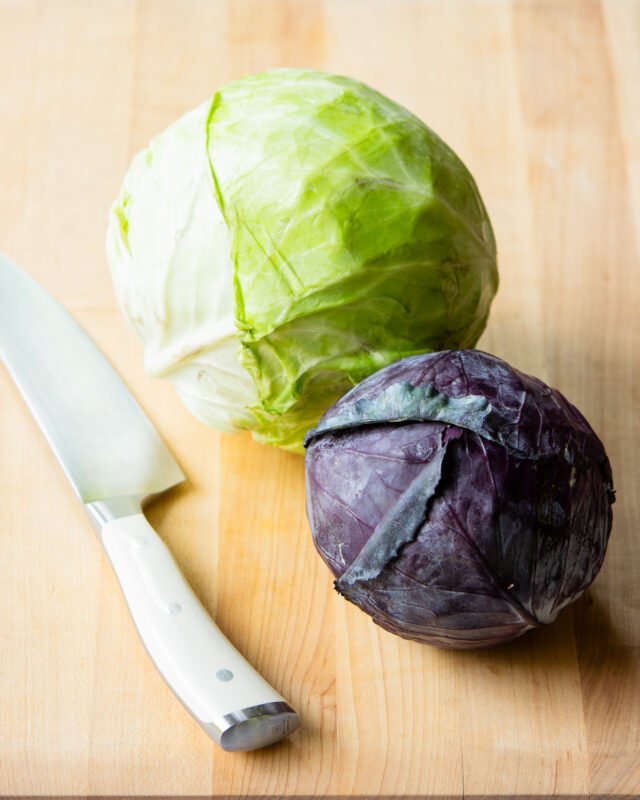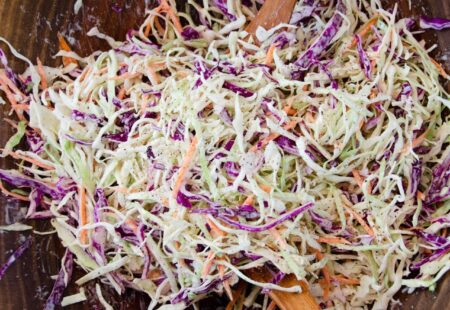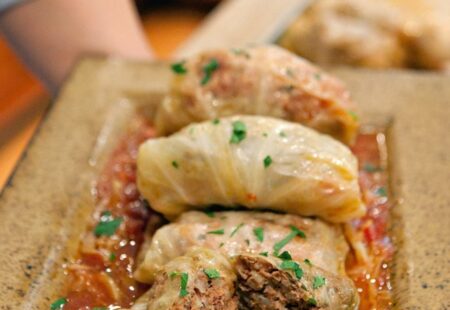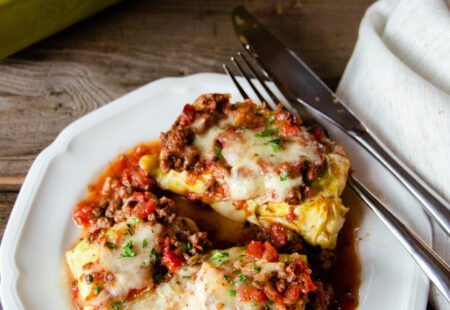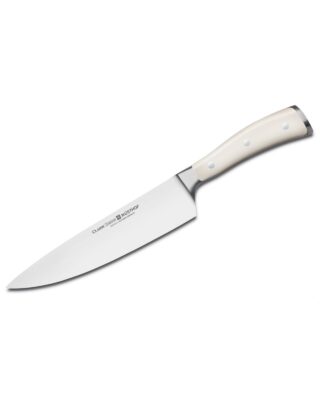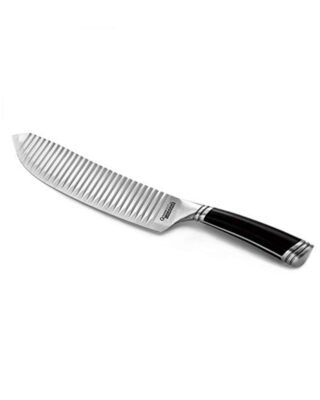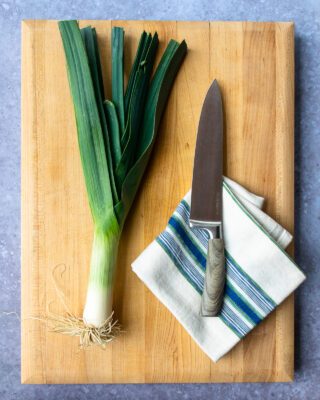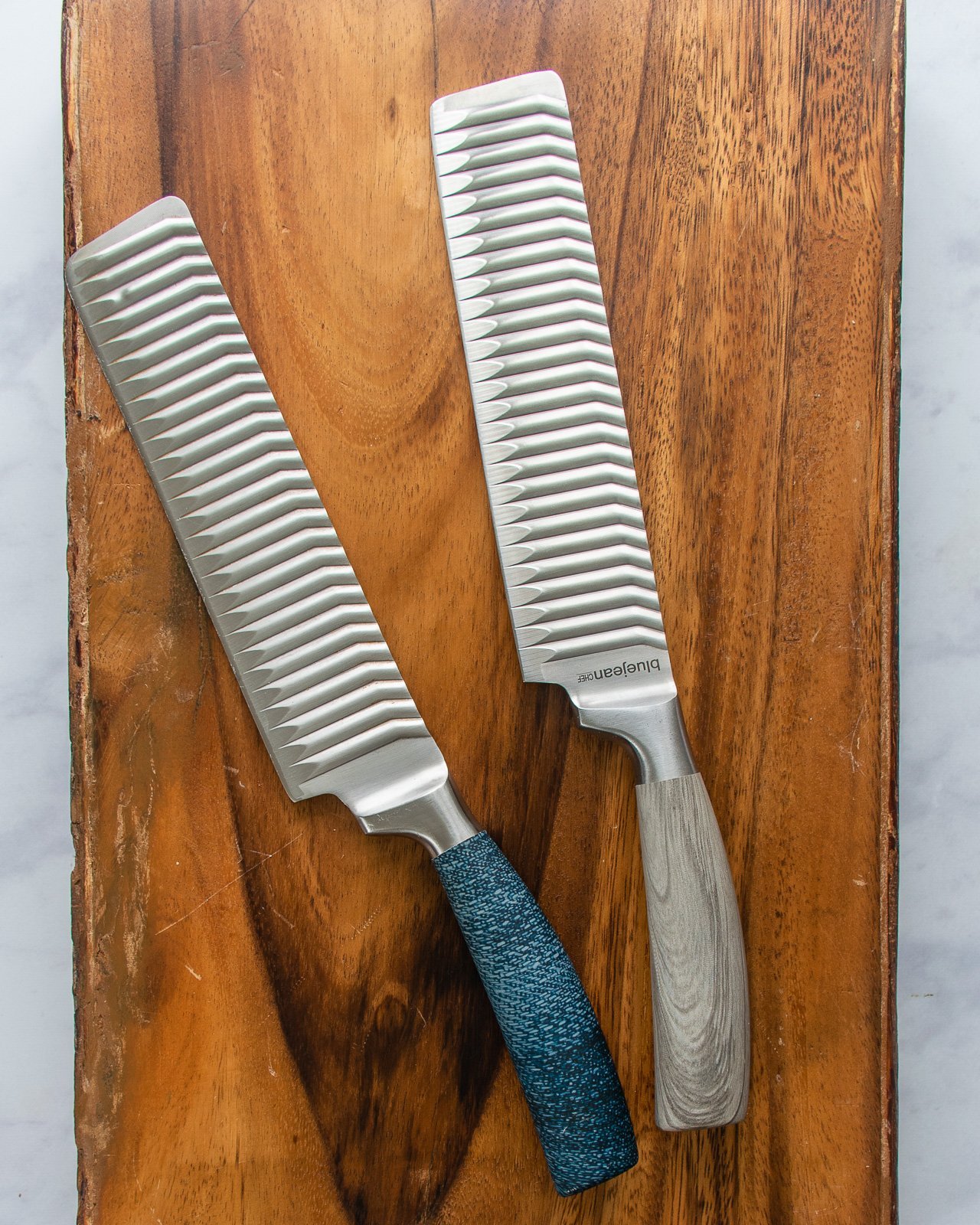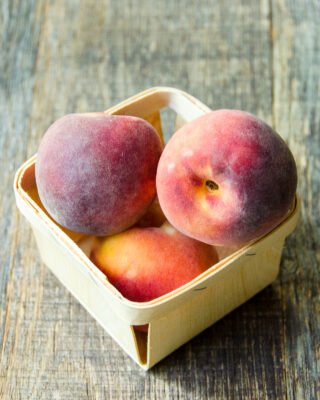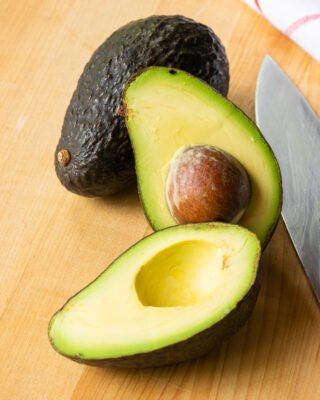Why Eat Cabbage?
Cabbage is more than just a pretty face! It’s a member of the cruciferous family with a mild taste that is inexpensive, good for you and so versatile. The only reason you might not be rushing to the store to pick up cabbage right now is because you feel like it’s too big to handle and prepare or you wonder what you’ll use it for. I can help you with both of these very tiny hurdles. Of course everyone thinks of coleslaw when they pick up cabbage, but it’s an essential ingredient in the traditional St. Patrick’s Day dinner of corned beef and cabbage, it’s delicious married to mashed potatoes in Colcannon, it can be wrapped around delicious fillings for cabbage rolls or these ricotta stuffed cabbage “shells”, and you can use it as an ingredient in so many places – on tacos, in mac and cheese… the possibilities are endless.
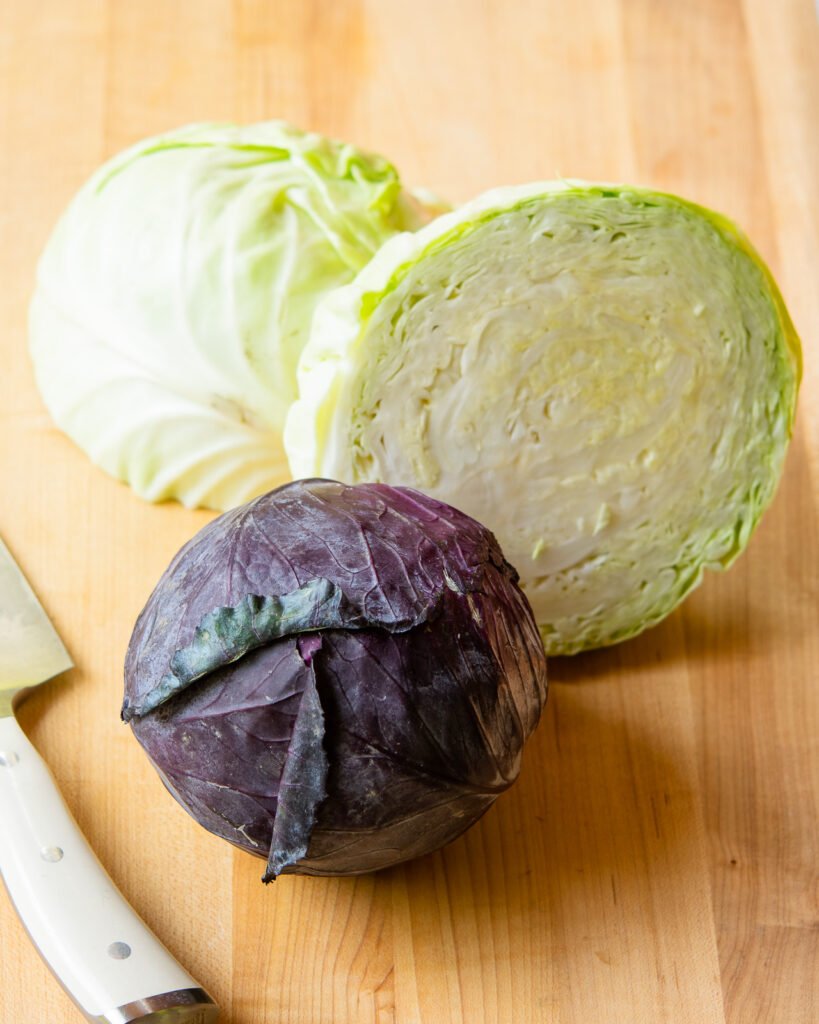
Types of Cabbage
There are basically four different types of cabbage.
- Green Cabbage – this is the cabbage we all know with tightly packed green leaves around a round head. It can taste quite peppery and feel rubbery when raw, but cooked it softens beautifully and has almost a sweet taste. This is the cabbage most often used for corned beef dinners and coleslaw.
- Red Cabbage – red cabbage (also called purple cabbage) is spectacularly beautiful with a deep purple color and leaves similar to green cabbage, but since they take longer to mature the leaves are not quite as tender. You can use red cabbage anywhere that you’d use green cabbage, but that beautiful color will transfer to everything it comes into contact with – other foods, your hands, your clothes.
- Savoy Cabbage – this pretty curly-haired sister cabbage is similar to green cabbage but the leaves are frilly and wrinkled. The head is less compact, which makes it easier to remove whole leaves. That makes it a perfect candidate for stuffed cabbage rolls. It is the most tender and sweetest of the cabbage family (as is the way with all the curliest-haired members of any family – at least according to me!).
- Napa Cabbage – Napa cabbage is oblong in shape and also has wrinkly, frilly leaves. It has a thick stem, which is reminiscent of bok choy, but it’s a cabbage while bok choy is a chard. Napa cabbage is also sweet and tender than green cabbage (which just proves my curly-hair theory true!).
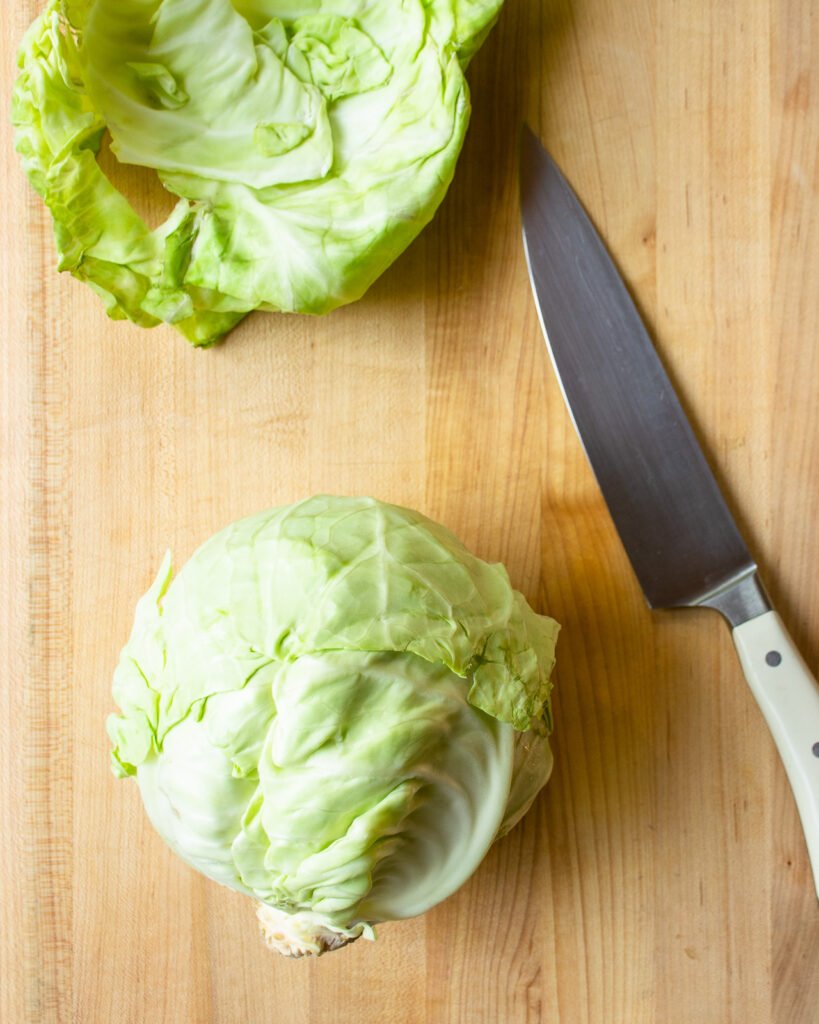
How to Cut Cabbage into Wedges
Let’s tackle this head! You’ll want to cut cabbage into wedges when you’re braising or making a gratin, or any time you want cabbage to stay together in a piece. It’s the core in the center of the head that holds all the leaves together, so the goal when cutting wedges of cabbage is to make sure each wedge has a piece of the core.
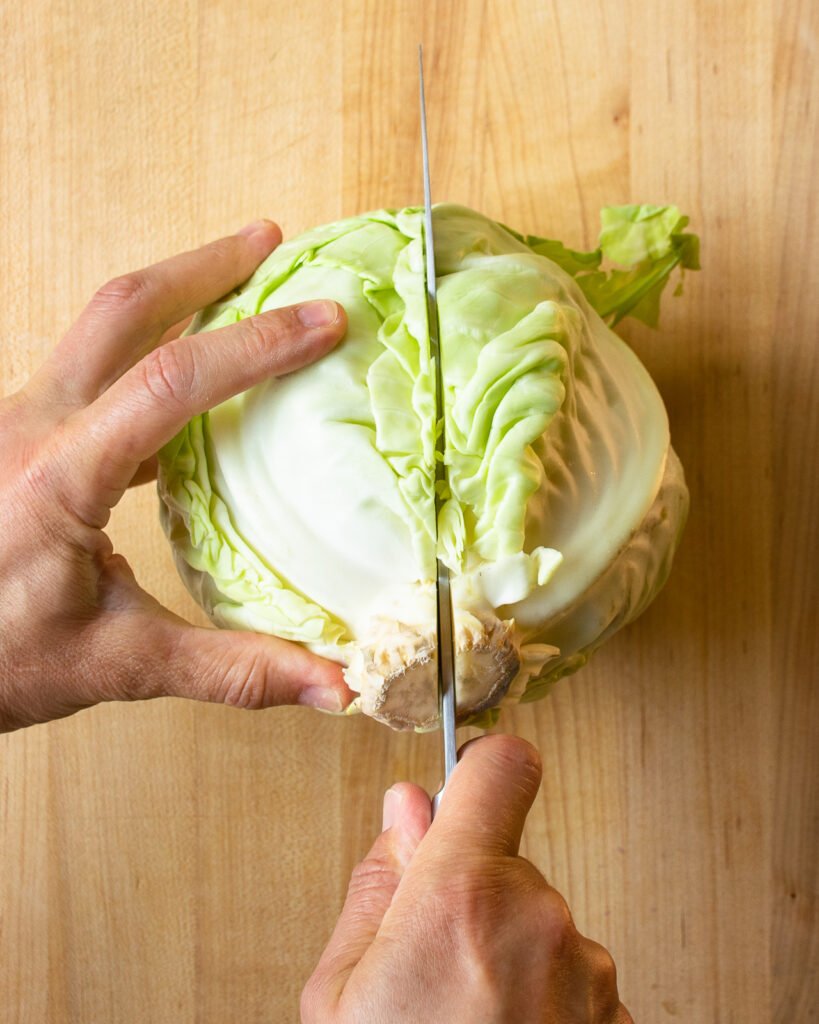
Step One: Remove any wilted or browned outer leaves on the cabbage and then cut the cabbage in half through the center of the core.
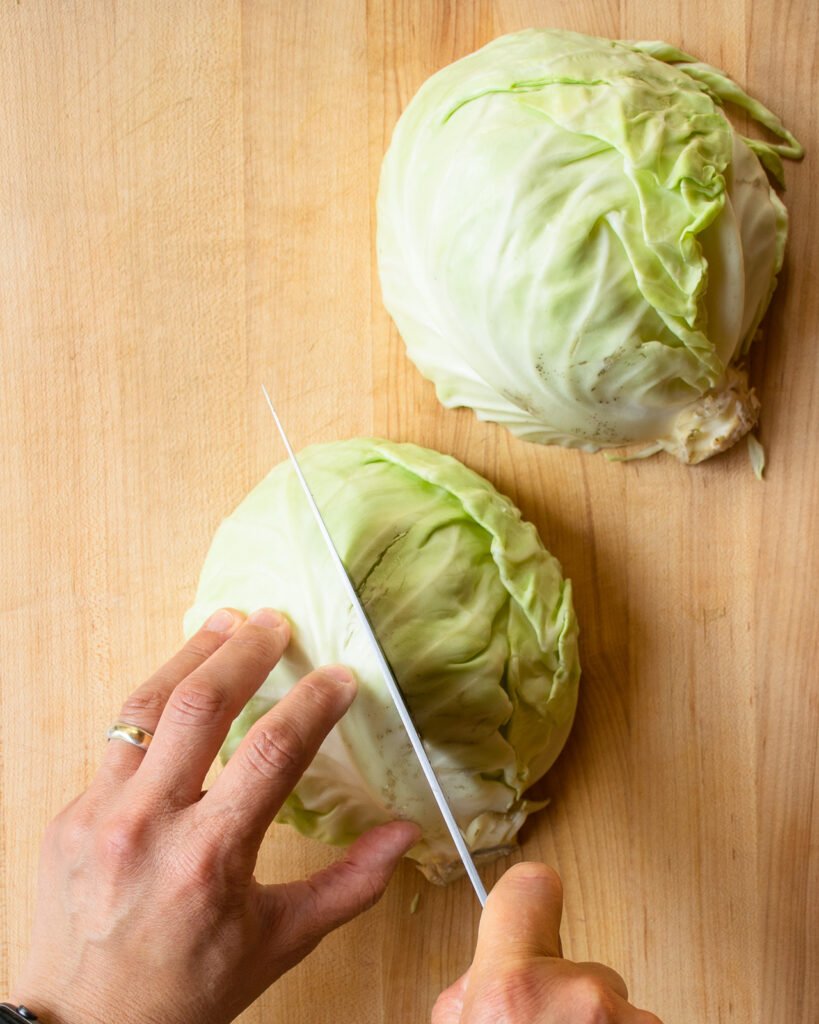
Step Two: With the flat surface down on the counter, cut each half into quarters, paying attention to cut directly halfway through the core.
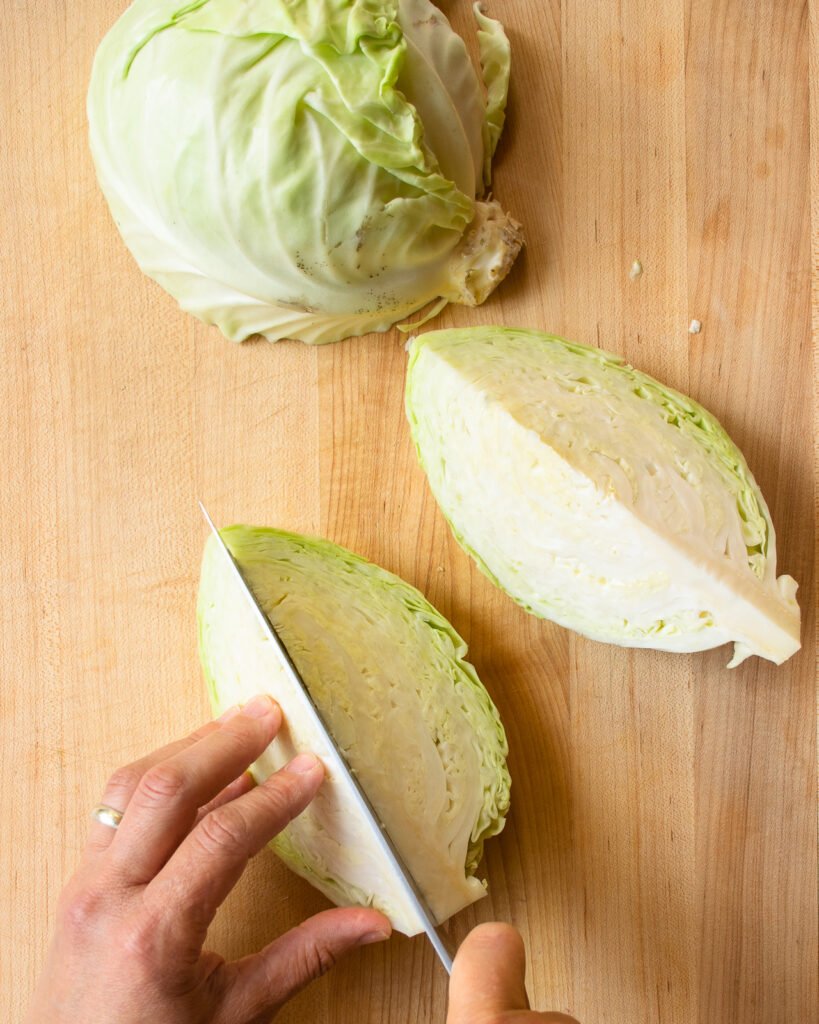
Step Three: Flip the cabbage over so that you can see the core and cut the quartered cabbage into wedges through the core, trying to make sure that all the wedges have a piece of the core attached.
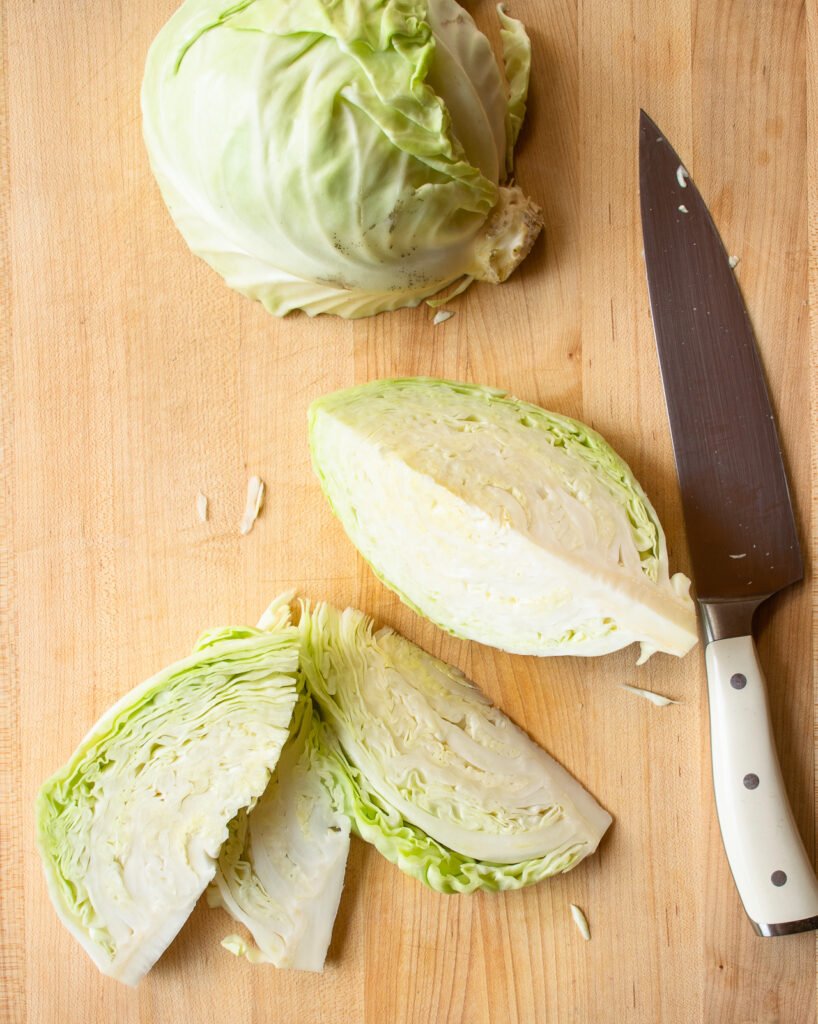
How many wedges you get out of one quartered head of cabbage depends entirely on how thick you want those wedges to be at their widest end. Usually two or three wedges per quarter is plenty.
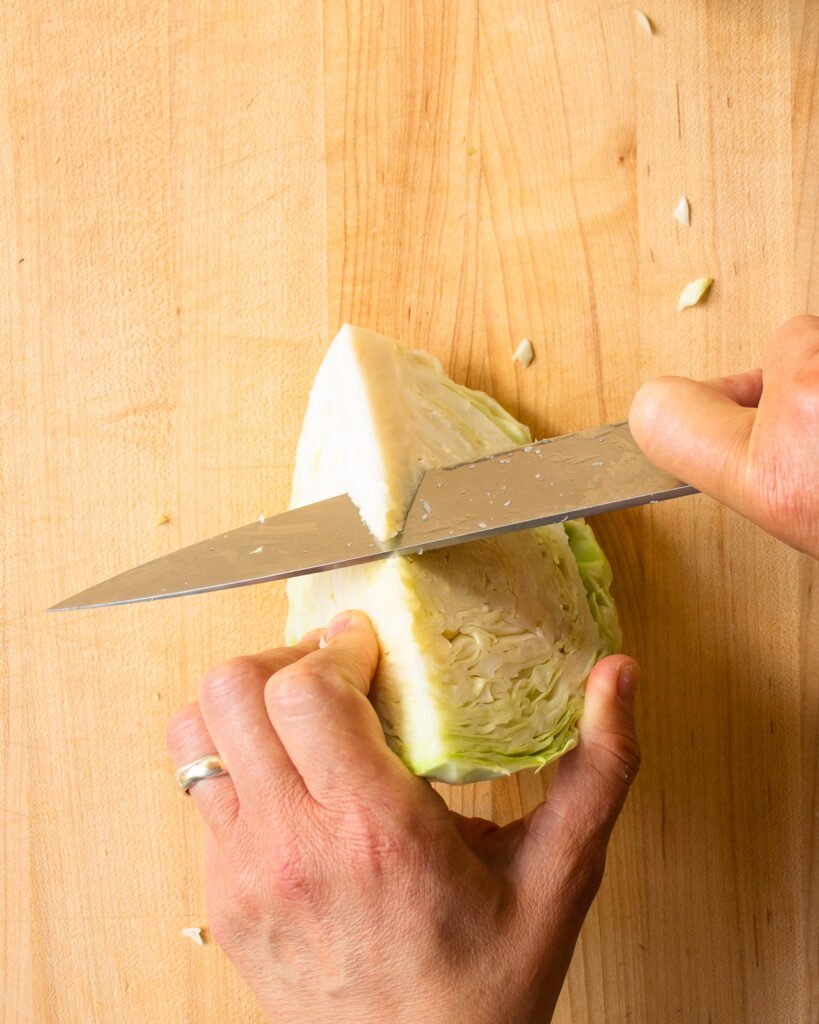
How to Dice Cabbage
Sometimes you need to just dice the cabbage for a recipe and you don’t need the cabbage pieces to stay together. This is when you would remove the core of the cabbage and that is easiest done once you’ve quartered the head.
Step One: Slice the triangle of core off the quartered cabbage as in the photo above.
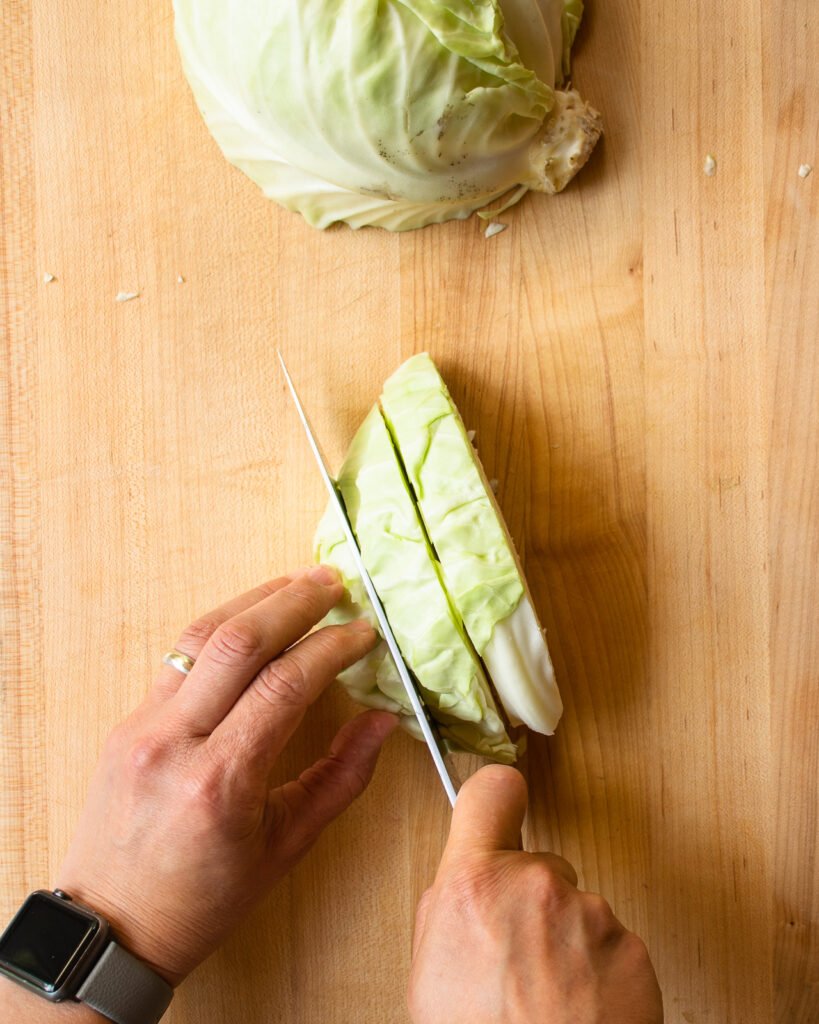
Step Two: Rest the quartered cabbage on one of its flat surfaces and make evenly thick slices in one direction, keeping the cabbage intact as much as possible.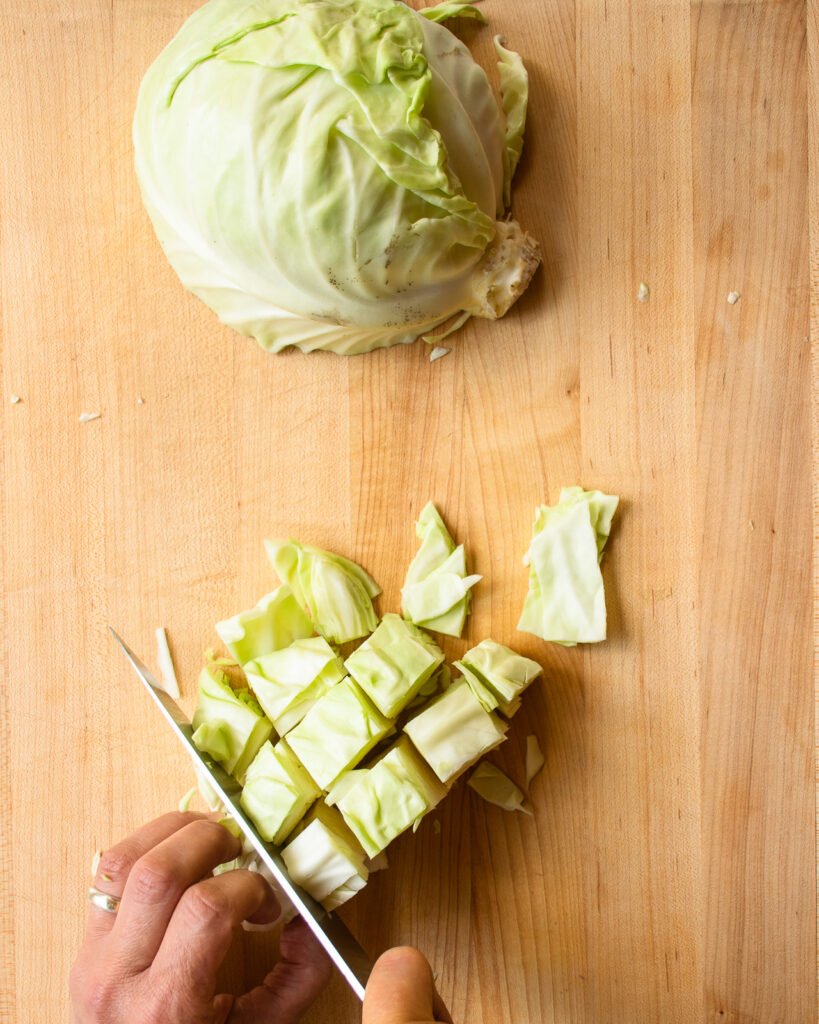
Step Three: Turn the sliced cabbage 90º and make similar evenly-thick slices across your first slices. Break the pieces of cabbage apart and you now have diced cabbage.
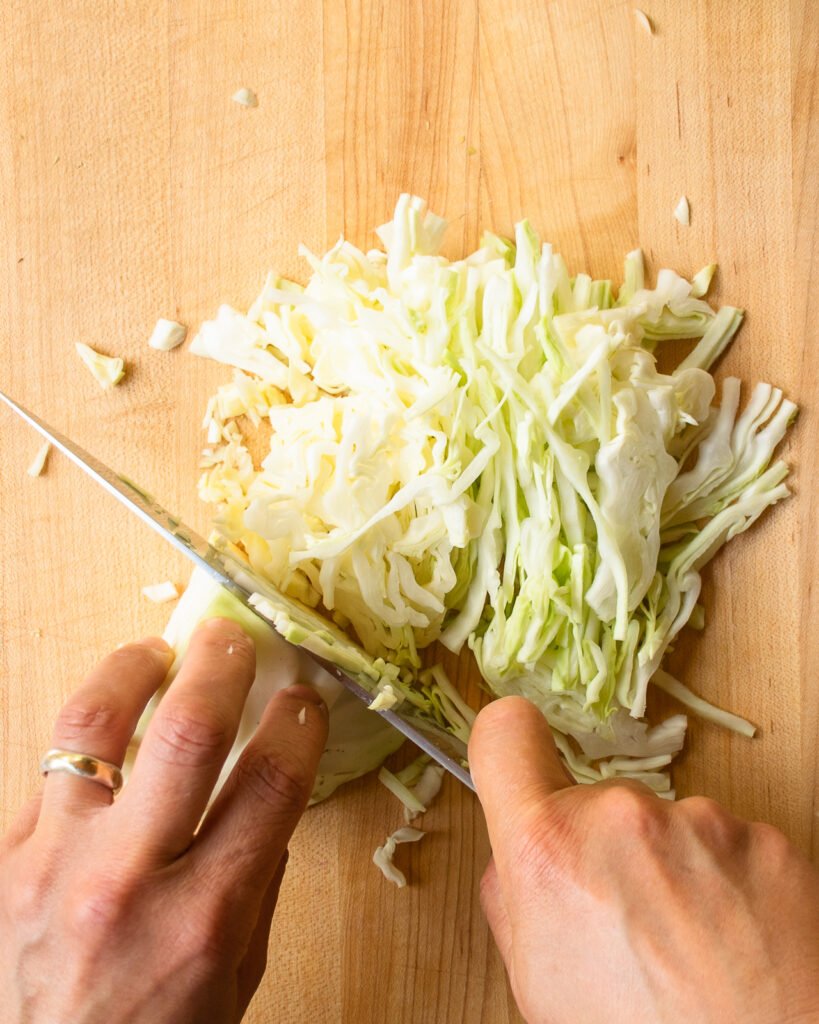
How to Cut Cabbage for Coleslaw
There are two ways to make thin strips of cabbage for coleslaw with your chef’s knife. First of all, decide whether you want short thin slices or long thin slices. If you want short slices, you will cut across the short side of the quartered cabbage – slicing across the cabbage and moving from the top of cabbage to the bottom. If you want long slices, cut parallel to the cut side of the quartered cabbage – from core to top of cabbage. The photo above shows you how to get shorter slices, cutting from the pointed top of the quartered cabbage down to where the core used to be.
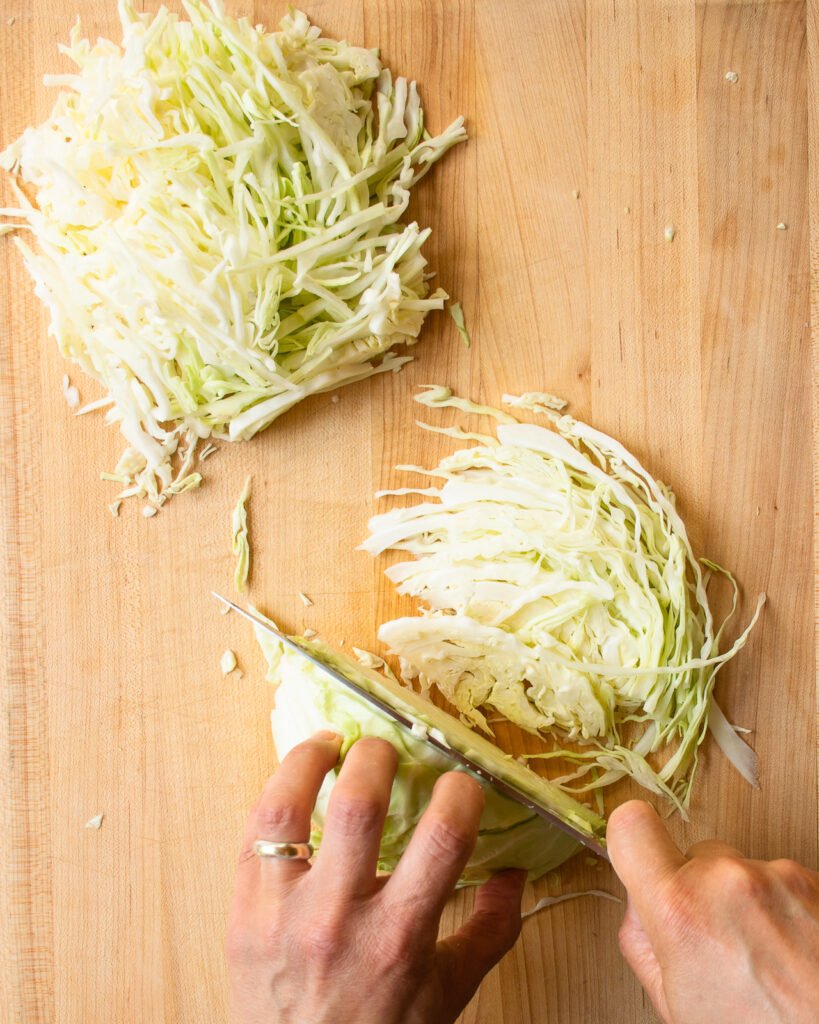
The photo above shows you how to cut cabbage into long thin slices by cutting parallel to the already cut surface.
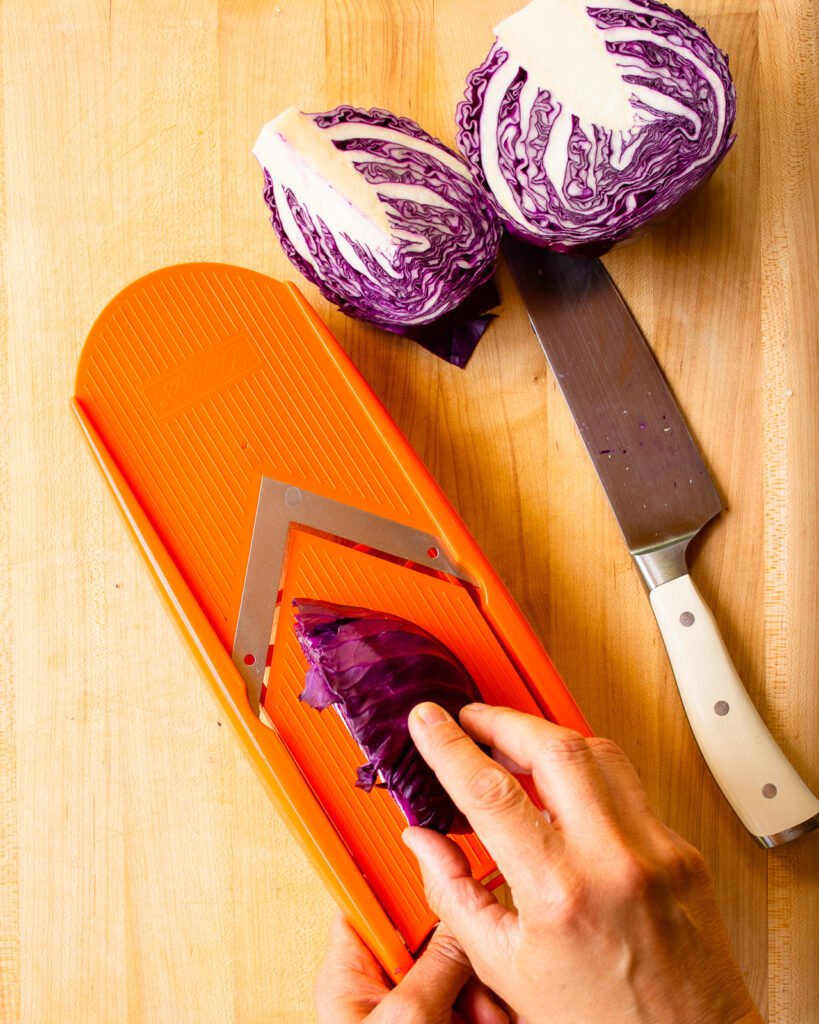
How to Shred Cabbage with a Mandolin
If you’re making a lot of coleslaw, some people opt for using a mandolin or V-slicer. This does make the slices of cabbage perfectly even, but it can be a little scary to use when you get down to the bottom of the cabbage wedge. Use a hand guard when the cabbage becomes too small to hold on to, or cut the small leftover cabbage wedge by hand once you’ve safely shredded as much as possible.
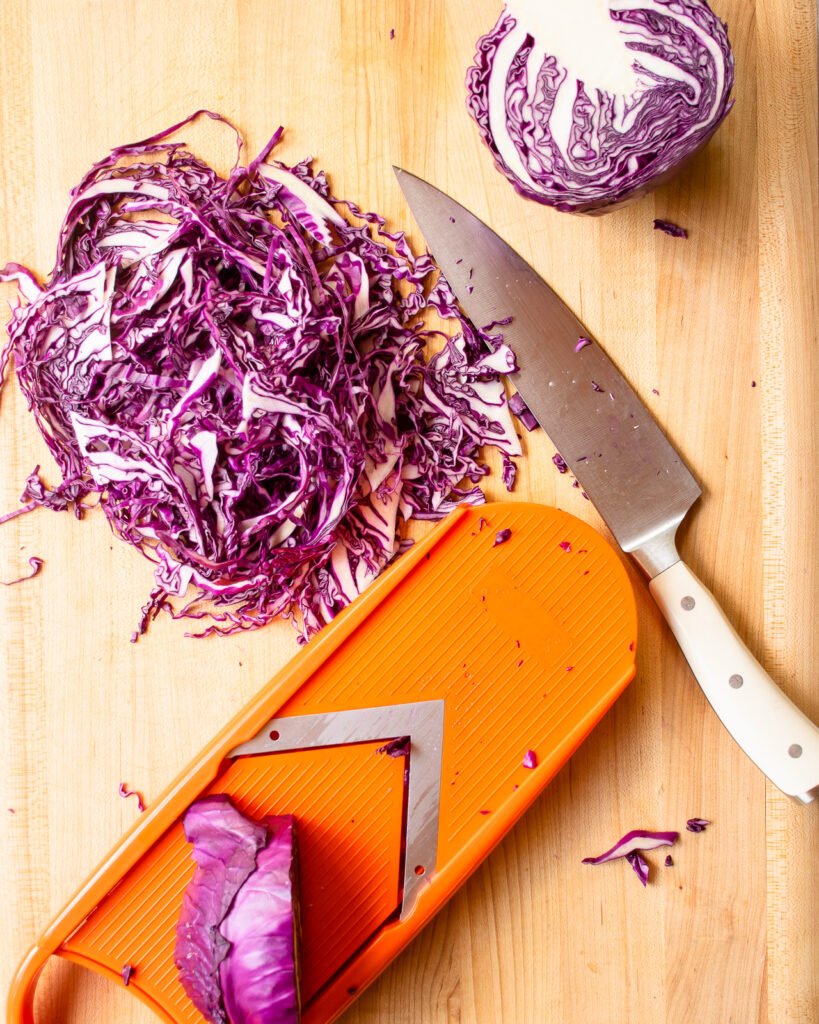
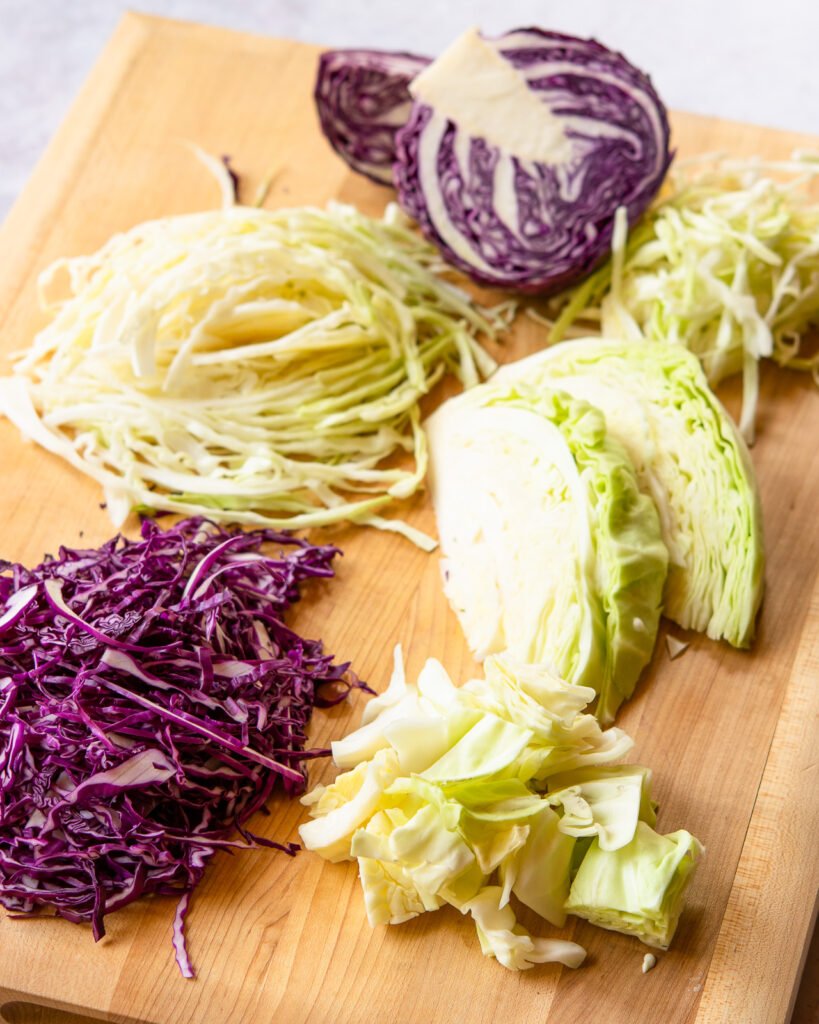
How to Store Cut Cabbage
It’s best to keep cabbage as a whole head until you are ready to use it. As a whole head, it can last from 1 to 2 months in your refrigerator! It will deteriorate faster in a cut form. The cut surfaces will brown, but they can be cut off and discarded. If you’ve already cut up the cabbage, store it in a zipper sealable plastic bag, squeezing out as much air as possible and keep it in the crisper drawer of your refrigerator for up to 2 weeks.
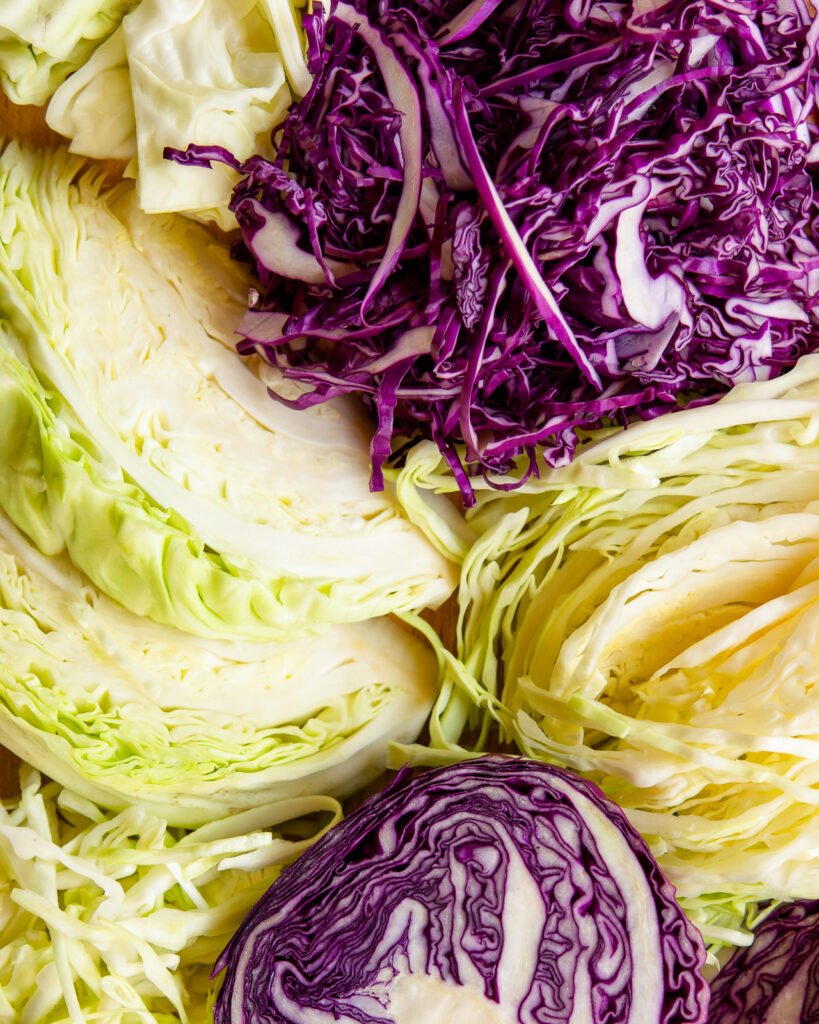
Quick Notes:
- Cabbage is a low calorie vegetable that is a good source of iron, calcium, magnesium, potassium, Vitamin C, Vitamin K, Vitamin B6 AND it’s a very good source of fiber and folate.
- There are 4 types of cabbage: Green, Red (Purple), Savoy and Napa.
- Cut cabbage into wedges for braised corned beef and cabbage, gratins or other recipes where the cabbage should stay together. Make sure you cut every wedge with a little of the core intact.
- Cut cabbage into dice for recipes where cabbage is an ingredient, like Colcannon or Irish Mac and Cheese.
- Cut cabbage into short thin slices by cutting wedges across the short side – from top of cabbage to the core.
- Cut cabbage into long thin slices by cutting wedges parallel to their already cut side.
- Use a mandolin slicer or V-slicer to shred cabbage uniformly.
